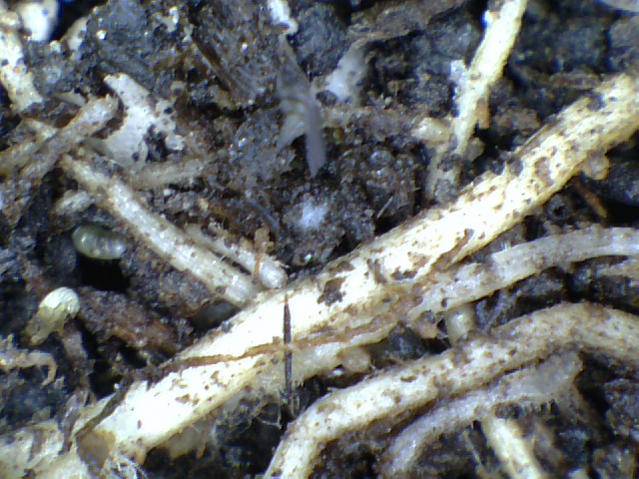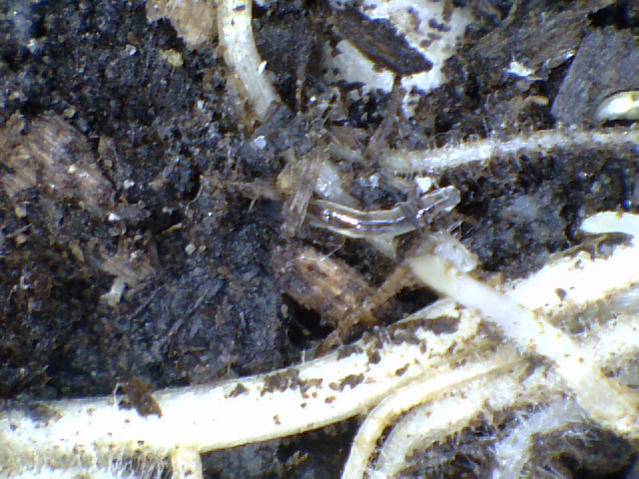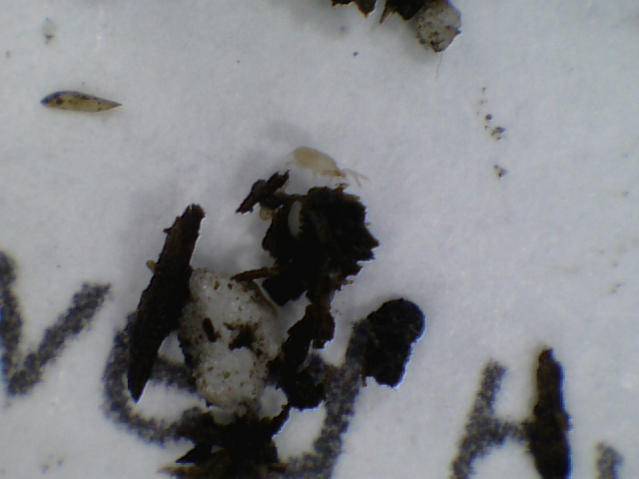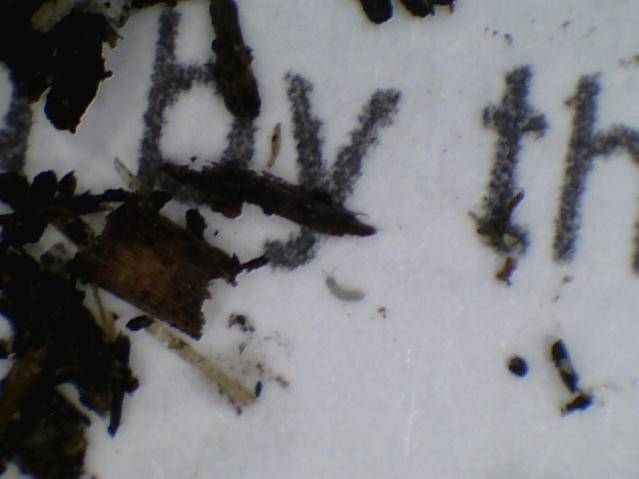I had my best yield ever with them in a run of blue dream. 2.1 per 1 k but it's frustrating to see the yellowing.
-
Happy Birthday ICMag! Been 20 years since Gypsy Nirvana created the forum! We are celebrating with a 4/20 Giveaway and by launching a new Patreon tier called "420club". You can read more here.
-
Important notice: ICMag's T.O.U. has been updated. Please review it here. For your convenience, it is also available in the main forum menu, under 'Quick Links"!
You are using an out of date browser. It may not display this or other websites correctly.
You should upgrade or use an alternative browser.
You should upgrade or use an alternative browser.
Fungus gnats or WINGED ROOT APHIDS???
- Thread starter spleebale
- Start date
cannascholar
Member
Kony, I had some that looked like that. Poison the shit out them before they sabotage your grow. Try and get some sent off to a lab I'd love to learn more about these bastards.
SecondAttempt
Active member
Just found some of these fuckers... explains why my grows have been for shit lately.
Wish me luck... I'm going nuclear, everything is in veg.
Wish me luck... I'm going nuclear, everything is in veg.
I dont think the bug I described and linked crappy pictures of are Root aphids. First noticed them about 10 days ago. The ladies are just as happy as they were 10 days ago. No flying bugs or any noticable bugs of anykind in the room aside from them.
Hit them with a brewed batch of og biowar foliar today just incase. Figured it can't hurt.
Hit them with a brewed batch of og biowar foliar today just incase. Figured it can't hurt.
i should add that this wasnt typical it was dreadful having them and i lost a whole crop at week 4 once too.i routinely harvested early to beat the yellowing
I had my best yield ever with them in a run of blue dream. 2.1 per 1 k but it's frustrating to see the yellowing.
wow, this thread keeps coming up and this time I don't see anybody whos dealt with RA here.
KONY; those are probably some kind of predatory soil mite, you don't show a good enough pic of your bugs to tell.





First pic, Fungus gnat (pupa), second pic Nematode, predatory mite and springtail, then a springtail by itself, then a predatory mite.
None of these bugs are necessarily "harmful"
We REALY need a "know your bug" thread
KONY; those are probably some kind of predatory soil mite, you don't show a good enough pic of your bugs to tell.
First pic, Fungus gnat (pupa), second pic Nematode, predatory mite and springtail, then a springtail by itself, then a predatory mite.
None of these bugs are necessarily "harmful"
We REALY need a "know your bug" thread
https://www.icmag.com/ic/picture.php?albumid=53559&pictureid=1249997View Image
do they look like this under an hand lense?
Not sure, a regular magnifying glass isnt nearly strong enough, to look at spider mites in the past ive used a 8x20 Monocular inverted backwards to view bugs. This is about 20-30x I think. However the bugs are so small its still really hard to see what they look like.
I have a 60-100x scope around here somewhere, but at that zoom they are gonna move way to much. I need a proper 30x loupe.
We started chopping another room seperate than the ones Ive seen the majority of these bugs in, I found some in that room but not nearly as many. That round is best round in a while, gpw easy. I noticed in a tiny puddle of runoff removing one of the pots springtails and a few tiny little red/brown mite looking bugs. They would run into a springtail and both try to go opposite ways. Was interesting.
those are mites that i thought were bulb mites at around 180-220x i cant remember. someone on another thread said they werent bulb mites but rather some innocuous soil mite.
Certainly NOT root aphids. Soil mites yes, root aphids no.
Certainly NOT root aphids. Soil mites yes, root aphids no.
Do you know anything about them?
BlazinPurps
Active member
[URL=https://www.icmag.com/ic/picture.php?albumid=53559&pictureid=1249997&thumb=1]View Image[/url]
do they look like this under an hand lense?
Found some of these guys on a Jilly Bean cutting I just took in and am isolating I would also like to know if anyone has an idea what they are? I did some searching and could not find anything that looked like them but that pic is spot on exactly what this cutting has.
Found some of these guys on a Jilly Bean cutting I just took in and am isolating I would also like to know if anyone has an idea what they are? I did some searching and could not find anything that looked like them but that pic is spot on exactly what this cutting has.
Depending on their size, they look like broad mites to me.
Inspect the eggs.
And embossed diamond pattern signals broad mites.
Smooth egg indicate cyclamen mites.
If they move fast, they might be predator mites.
Point is, there are a lot of mite types, and they all look quite similar.
Might try adding predator mites, then they will either compete, or eat, yah?
Aloha,
Weezard
Found some of these guys on a Jilly Bean cutting I just took in and am isolating I would also like to know if anyone has an idea what they are? I did some searching and could not find anything that looked like them but that pic is spot on exactly what this cutting has.
I thought they were galic bulb mites but someone else said no. I found them with a potato slice test for aphids.
those are mites that i thought were bulb mites at around 180-220x i cant remember. someone on another thread said they werent bulb mites but rather some innocuous soil mite.
Hypoaspis miles.....bennies......They eat fungus gnats, springtails, and thrips pupae, nematodes, and other mites. They are predator mites, and commonly found in potting soil. You can also buy them.
http://www.buglogical.com/hypoaspis-miles/
Thrip......looks like it....hard to be sure from one picture.
Not sure, a regular magnifying glass isnt nearly strong enough, to look at spider mites in the past ive used a 8x20 Monocular inverted backwards to view bugs. This is about 20-30x I think. However the bugs are so small its still really hard to see what they look like.
I have a 60-100x scope around here somewhere, but at that zoom they are gonna move way to much. I need a proper 30x loupe.
We started chopping another room seperate than the ones Ive seen the majority of these bugs in, I found some in that room but not nearly as many. That round is best round in a while, gpw easy. I noticed in a tiny puddle of runoff removing one of the pots springtails and a few tiny little red/brown mite looking bugs. They would run into a springtail and both try to go opposite ways. Was interesting.
I think the large amount of soil mites is indicating that you have an ample supply of their food. This could be an ALARM bell or nothing. You may have root rot or some other issue caused by fungus gnats or poor drainage, etc. That is, often when you see a large amount of these soil mites, which themselves don't cause any damage, there is too much of their food such as fungus, mold, decaying matter etc. Their food is what should be of concern. And then you need to find out why there is so much of there food...
Even those with a PhD in entomology would have a hard time ID a soil mite with 100% accuracy. Each body part needs to examined under a microscope and compared to an existing database. Often new species are discovered. There are tens of thousands of known mites but that only accounts for about 5% of actual. So you see the futility of trying to ask the question of what kind of mite is this...I thought they were galic bulb mites but someone else said no. I found them with a potato slice test for aphids.
Would anyone care to attempt to ID these fast fuckers? I only count 6 legs...
https://vidd.me/oR5
https://vidd.me/oR5



